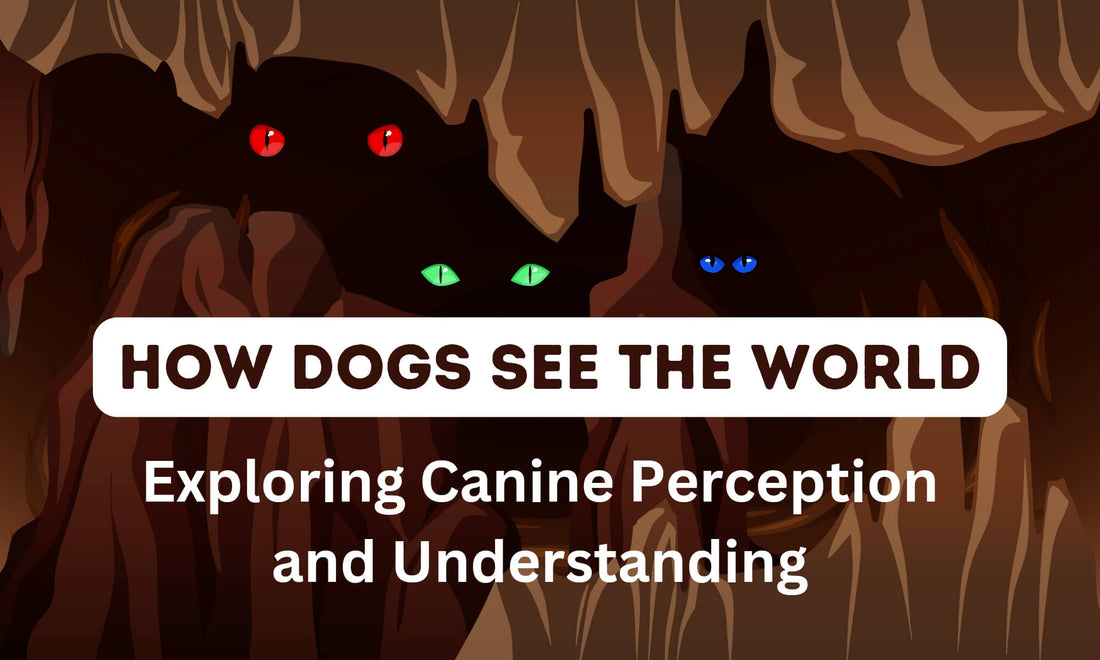For many decades, dogs have been regarded as one of the most adored pets, having the reputation of being loyal and faithful friends who offer us unconditional affection. But have you ever considered their worldview? How do dogs comprehend and interact with their surroundings, and which sensory organs do they rely on the most?
Having an understanding of our furry friends' perception is a vital aspect not only for dog owners but also for those who adore them. It can assist in comprehending your pet's behavior towards other canines, making communication methods effective in dealing with any situation while enhancing bonding between man’s best friend and owner.
Our focus in this article will be exploring how dogs interpret various aspects of the surrounding environment, including smell, sight, and hearing, so we may all learn what makes these wonderful animals tick!

How Dogs See the World: Sense of Smell
Dogs have long been recognized to have a keen sense of smell. This enhanced capacity makes them useful in search-and-rescue efforts, narcotics detection, and as trustworthy medical alert companions. A dog's nose contains about 300 million olfactory receptors, but humans only have six million.
The following are some interesting facts concerning a dog's sense of smell:
• A dog can differentiate scents up to around 100,000 times better than humans.
• They are capable of detecting odors that register between 1,000 and 10,000 times weaker compared to human detection levels.
• Their sense is so acute; it enables them to recognize individual molecules present within their environment with ease.
How does a dog's sense of smell affect how they see the world?
• Dogs rely on their sense of smell to explore their environment, which is why they are always sniffing around.
• They use their sense of smell to communicate with other dogs, leaving scent markers through urine and feces.
• Dogs can detect changes in a person's body chemistry, such as a sudden drop in blood sugar levels, and alert their owner.
How Dogs See the World: Sense of Sight
While a dog's sense of smell is incredibly powerful, their sense of sight is not as strong. Dogs are known to have color vision, but it is not as vivid as humans. Dogs have two types of color receptors, compared to humans who have three. This means that dogs see the world in shades of blue and yellow.
Here are some interesting facts about how dogs see the world:
• Dogs have better night vision than humans because they have more rod cells in their eyes.
• They have a wider field of vision than humans, but their depth perception is not as accurate.
• Dogs rely on their sense of sight to detect motion, which is why they are excellent at tracking prey.
How does a dog's sense of sight affect how they see the world?
• Dogs rely on their sense of sight to recognize their owners and other dogs.
• They use their sense of sight to detect threats and potential dangers.
• Dogs rely on their sense of sight to communicate with humans, using body language and facial expressions.
How Dogs See the World: Sense of Hearing
A dog's sense of hearing is incredibly sensitive, and they can hear sounds that are too faint for humans to detect. Dogs can hear sounds that are up to four times farther away than humans can, and they can detect sounds at much higher frequencies.
Here are some interesting facts about how dogs hear the world:
• Dogs can hear frequencies that are up to four times higher than humans can.
• They can detect sounds that are 20 times quieter than humans can.
• Dogs can hear sounds from all around them because their ears can move independently of each other.
How does a dog's sense of hearing affect how they see the world?
• Dogs use their sense of hearing to communicate with other dogs, such as barking, growling, or whining.
• They can also use their sense of hearing to detect potential threats or danger, such as the sound of an intruder or an approaching vehicle.
• Dogs rely on their sense of hearing to interpret human speech, tone, and emotion.
How Dogs Interpret the World: The Combination of Senses
While each sense is essential to a dog's understanding of the world, it's the combination of their senses that provides the most comprehensive perception. Dogs rely on their sense of smell, sight, and hearing to interpret their surroundings and make decisions based on that interpretation.
For example, if a dog sees a ball, they may use their sense of smell to detect its scent, their sense of sight to track its movement, and their sense of hearing to listen for the sound it makes when it bounces. This combination of senses allows the dog to have a more in-depth understanding of the ball and how to interact with it.
Frequently Asked Questions (FAQs)
Can dogs see in the dark?
Yes, dogs have better night vision than humans because they have more rod cells in their eyes.
Can dogs see colors?
Yes, dogs have color vision, but it is not as vivid as humans. They see the world in shades of blue and yellow.
Why do dogs sniff everything?
Dogs rely on their sense of smell to explore their environment, communicate with other dogs, and gather information about potential threats or dangers.
How do dogs communicate with humans?
Dogs communicate with humans using body language, facial expressions, and vocalizations such as barking, growling, and whining.
How can I communicate better with my dog?
To communicate better with your dog, you can learn to interpret their body language and facial expressions, use positive reinforcement training methods, and establish clear boundaries and expectations.
Conclusion
Understanding how dogs perceive the world is essential for dog owners and lovers alike. Dogs rely on their sense of smell, sight, and hearing to interpret their surroundings and make decisions based on that interpretation. By understanding how dogs see the world, we can communicate better with them, interpret their behavior, and build stronger relationships with our furry friends.



